Doctor Strange 2 should have used one MCU movie criticism to its advantage
Full spoilers for Doctor Strange 2 follow. You have been warned.
Doctor Strange in the Multiverse of Madness has finally landed in theaters – and there's plenty to enjoy about the latest Marvel movie . With multiple crowd pleasing cameos , horror-infused sequences, intriguing themes, and the usual lashing of action and humor, it's a stylish, but solid Marvel Cinematic Universe (MCU) offering that casual and diehard Marvel fans will be satisfied by.
That all said, it's not without its issues. The Marvel Phase 4 project's plot does feel somewhat stitched together and a little too fast paced, much of which you can likely trace back to the fact that the superhero film 's script underwent numerous rewrites and six-week long reshoots as recently as November 2021 .
It's unsurprising, then, that Doctor Strange 2 suffers from a slightly disjointed narrative and plot pacing problems. I wouldn't go as far as to say it's overly rushed, but it's certainly the victim – and not the beneficiary – of little story padding and a trimming of the fat, so to speak.
For some viewers, that'll be a good thing. Why drag a movie's story out when it's unwarranted? Isn't Doctor Strange 2 a good film because it's been stripped of plot threads that would ordinarily weigh it down?
Ironically, Doctor Strange in the Multiverse of Madness would have fared far better if it ignored the longstanding criticism of MCU films (and superhero flicks in general) and allowed itself a longer runtime. As it is, it's a good Marvel film, but it could have been more.
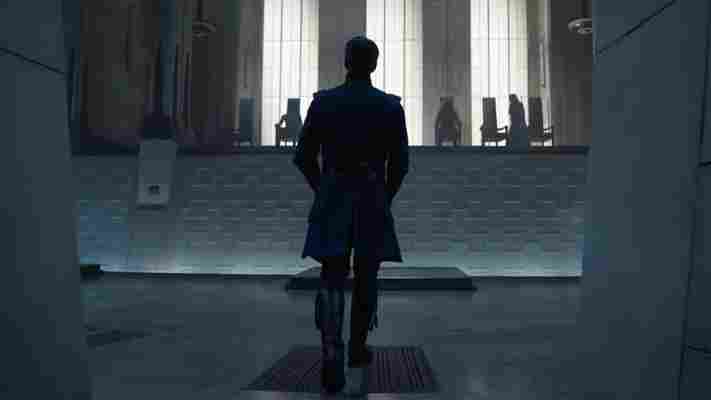
The runtime, which is a relatively skinny two hours and six minutes, could have easily been extended and that would have given the MCU film more time and more license to explore Stephen Strange's personal story arc.
Yes, enough time is devoted to the former Sorcerer Supreme – he's the star of the show, after all. But a more detailed character study of Doctor Strange, especially as much of the narrative is to devoted to him wrestling with the kind of person he is compared to his multiversal variants, would have made for a more emotionally impactful story.
As it is, Strange is aware of who he could have been if he'd made a different decision at any point in his MCU arc to date, but there's never a sense of him grappling with the choices he made. You know, apart from the regret he feels over not getting his 'happily ever after' ending with Christine Palmer.
It would have been interesting, for example, to see if he rued giving the Time Stone to Thanos in Avengers: Infinity War, or helping Peter Parker cast that spell to make everyone forget he was Spider-Man in No Way Home .
Sure, you can argue that he made the right calls – the events of and post-Endgame, plus No Way Home's climactic ending, show that he did. But, despite meeting variants of himself and other MCU characters, he remains steadfast that he made the correct decisions despite the multiversal consequences these two key actions have had. It would have made for intriguing viewing if Doctor Strange 2 had explored the ramifications of these decisions (and their impacts on him specifically) in more detail.

Wanda's arc feels similarly stunted by the movie's runtime. Positioned as the antagonist of the piece, it feels the Maximoff twin's character development in WandaVision was all for nothing. In the Disney Plus show , we see Wanda – aka the Scarlet Witch – comes to terms with her guilt and trauma over the death of Pietro Maximoff and Vision, as well as the fact that her twin sons Billy and Tommy aren't real entities in the MCU. It was a refreshing turn of pace for the troubled superhero, whose MCU arc has largely been built on the psychological wounds she's accumulated since her introduction in Avengers: Age of Ultron.
Most (if not all) of that character growth, though, is cast aside to position Wanda/Scarlet Witch as a grieving mother who's so laser-focused on being reunited with her children that she'll cause unwarranted destruction to achieve her goal. Yes, she's been consumed by the Darkhold so she's not thinking clearly. Okay, in the comics, Scarlet Witch is constantly grappling with her guilt and trauma, so it's reasonable to assume that her deep-rooted psychological scars (in the MCU) haven't gone away overnight. And sure, given Doctor Strange and his allies's own strengths and superpowers, this movie needed a villain as powerful as Scarlet Witch to outmuscle them.
However, with a longer runtime, Doctor Strange 2 could have delved deeper into the reasons behind Wanda's descent into, well, madness. She's a far more complex character than the one note individual she's made out to be in Marvel's last big screen offering. It's a pity, then, that Doctor Strange 2 doesn't examine the battle that rages inside her thoroughly.
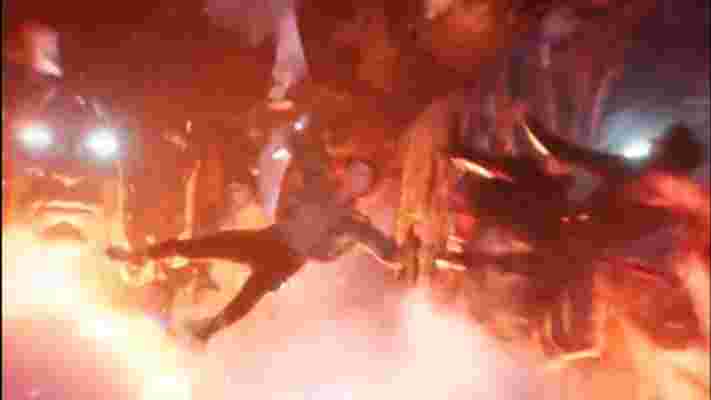
There are other story beats that would have benefitted from a lengthier movie. America Chavez's arrival in the MCU feels more like a plot device to allow the film's various characters to more easily traverse the multiverse. Given her importance to proceedings, and the father-daughter style relationship she develops with Doctor Strange, an extra 20 minutes may have helped to inform her long-awaited MCU debut and added more context to her and Strange's burgeoning partnership.
Superb as the Illuninati's battle with Scarlet Witch is, a lengthier fight sequence showing how the group work together would have gone a treat, too. This is a superhero team that defeated their universe's version of Thanos with relative ease, by all accounts. They wouldn't have been able to do so without working in tandem to take the Mad Titan out, so it was slightly disappointing that they attacked Wanda individually rather than collectively. Oh, and if you're going to give the fans what they want and cast John Krasinski as Mr. Fantastic, at least let us see him use his powers, Marvel.
Given the film's 'Multiverse of Madness' title, I – and many other viewers, I'm sure – also would have liked to visit more universes more rigorously. Teasing other realities, such as an animated one, a paint-based dimension, and even the dinosaur realm that was hinted at in the trailers, is all well and good. If you put 'multiverse' in the title, though, I want to explore a few more for a couple of scenes at least, rather than simply bypass them in a blink and you'll miss it montage.
The above may make me sound like an entitled detractor of Doctor Strange in the Multiverse of Madness. In my view, it's still a good movie with a lot of satisfying moments for audiences to revel in, and there's enough set up (based on its ending and post-credits scenes ) that tease the prospect of further and potentially bigger multiverse-led tales to come.
But there's a nagging feeling that it could have been a far better film if it was a bit longer. Some may disagree with that sentiment, particularly in the wake of increasingly lengthy superhero movies including The Batman and Avengers: Endgame. Shorter movies with tighter narratives (devoid of plot padding) make for better films, right?
Ordinarily, yes, but some movies need to have bigger runtimes if it aids their stories. Doctor Strange 2 is the shortest MCU movie in three years but, while that's music to the ears of some fans, it's not necessarily a good thing, what with the film's somewhat messy plot.
Director Sam Raimi previously revealed (per Collider ) that Doctor Strange 2 originally ran for two hours and 40 minutes, and I can't help but wonder if this cut would have made for a more thorough and enjoyable film. In another universe, maybe there's a version of Doctor Strange in the Multiverse of Madness that retained its initial runtime and is all the better for it. Without access to Chavez's multiverse portal powers, though, I guess we'll never know.
Doctor Strange in the Multiverse of Madness is out now in theaters worldwide.
I transformed my sleep with a speaker that costs less than a deli sandwich
You know the feeling – you really need a good night's sleep after a busy day, but your mind keep racing and for some reason you just can't settle down and switch off. It's something that's happened to me a lot over recent months, and I'm not alone; sleep problems have been common during the pandemic , even in people who don't have the virus.
One thing that often helps me drift off is some ambient ocean noise from the Rainy Mood app on my phone (with the seagull effects turned off), but playing it over my phone's speaker risks disturbing my husband, and sleeping with headphones is just plain uncomfortable.
There are alternatives, like the SleepPhones from AcousticSheep , which are essentially tiny speakers built into a soft headband, but wearing anything around your head at night takes some getting used to, and when you're already stressed, that's the last thing you need. I've discovered an alternative, though – something that's easy to use, impossible to feel at night, and cost less than my lunch.
The device in question is the SoundLAB Pillow Speaker – an unassuming little triangle of cream-colored plastic, reminiscent of PCs from the early 1990s. It set me back £4.21 on Amazon , and it's available in the US for $9.99 . It arrived packaged in a plastic bag with no box, and has no branding on it whatsoever. Don't let its ugliness fool you, though – it's actually a great little bit of kit (and you won't see it when it's under your pillow).
Cheap and cheerful
First, it's worth noting that the SoundLAB connects to your phone, radio, or other audio device of choice using a 3.5mm headphone jack, which might be an issue if you have a handset more modern than my Fairphone 3 . Thankfully, the speaker has a 65cm cable, which was more than enough to run from my bedside table to my pillow without any risk of pulling my phone onto the floor.
You might be wondering why I wouldn't just use a mini Bluetooth speaker instead and avoid the hassle. The answer is that lithium batteries don't appreciate being too warm, and could become dangerously hot tucked away under a couple of inches of hollowfiber. In a worst-case scenario, an overheated battery cell can rupture and create a chain effect called thermal runaway that ultimately leads to an explosion.
That's the cause of all the e-bike fires you might have seen in the news lately, and it's not something I want happening under my head. It might not happen, but I'm not willing to take the risk.
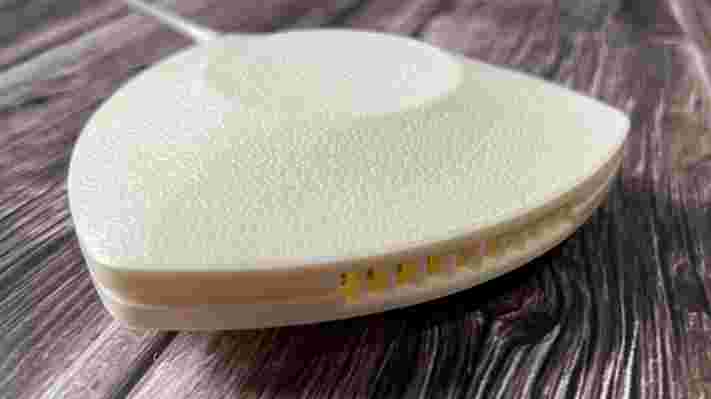
Under-pillow speakers are all rather ugly, and the textured plastic of the SoundLAB doesn't do it any favors aesthetically, but it's actually a sensible design choice. Unlike some other devices I've tried (and which I'll be reviewing soon as part of Sleep Awareness Week ), it didn't slide around and shift out of position overnight.
Its weird flat shape means it's impossible to feel, but when you put your head down, you're able to hear whatever's playing on your phone (whether it's a lovely soundscape from Calm narrated by Harry Styles, a podcast, or your favorite downtempo music), and sound is emitted through grilles on the sides rather than on top, which stops the higher frequencies being smothered.
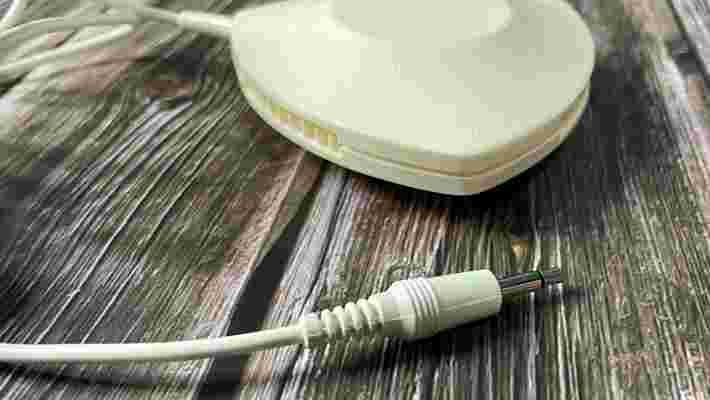
This isn't the very best sounding under-pillow speaker I've tested in recent weeks – that award goes to the superbly named Roberts Radio Pillow Talk – but the SoundLAB is a third of the price, and for my needs it's perfectly good. If you want to listen to audiobooks then you might prefer the more detailed sound of the Roberts model, but for everything else the SoundLAB is easy to recommend.
Now, when my mind refuses to settle down, I can just plug it in, fire up Rainy Mood, and enjoy the calming sounds of a simulated ocean without risking disturbing my husband. The fact that he doesn't make fun of me for wearing a silly-looking headband is also a bonus.
This article is part of TechRadar's Sleep Week 2022 (running from Sunday 13 to Saturday 19 March), a week-long celebration of all things slumber. We'll be bringing you proven techniques and tips to help you sleep better, and have rounded-up all the top-rated tech to transform your sleep.
Leaked Apple M1 Ultra benchmarks suggest the Mac Studio could be a Mac Pro killer
The new Mac Studio could be an incredible PC, easily outperforming Apple’s most powerful (and expensive) Mac Pro , if leaked benchmarks are accurate.
As MacRumors reports , benchmark results for the Geekbench 5 software, which tests the capabilities of a PC’s processor, shows a Mac Studio with a 20-core M1 Ultra scoring 1,793 in the single-core tests, and 24,055 in the multi-core ones.
These are impressive numbers, especially when pitted against the Mac Pro with a 28-core Intel Xeon W processor, which scores 11,52 and 19,951 in the same tests.
These scores suggest that the M1 Ultra is 21% faster in multicore, and a whopping 56% faster in single-core performance, compared to the 28-core Mac Pro.
The single-core performance means that the M1 Ultra is faster than the Xeon W, despite having fewer cores overall.
The Intel Xeon W is a powerful professional-grade processor that’s designed for very heavy workloads, so the fact that Apple has come out with chips that can outperform it, is extremely impressive, especially considering the lower power consumption of the M1 Ultra.
Analysis: Did Apple just make a Mac Pro killer?
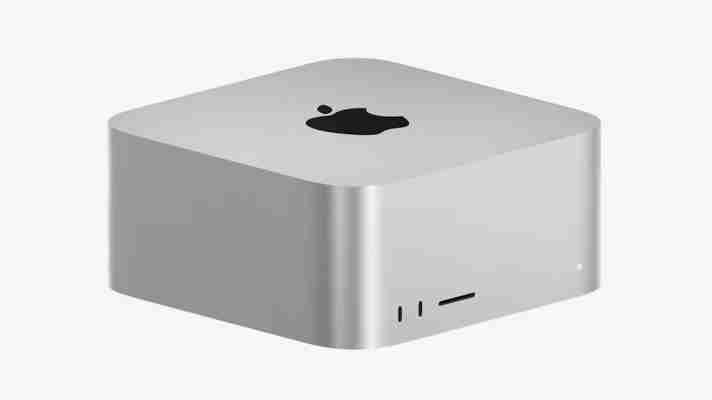
While these benchmark results aren’t verified, they look realistic, and correspond to the kind of performance improvements Apple was throwing around at its March Event , where both the Mac Studio and the M1 Ultra were unveiled.
The M1 Ultra looks set to be a very impressive bit of kit, essentially made up of two M1 Max chips connected together and acting as one giant, super-powerful, SoC (System-on-Chip).
The Mac Studio will be the first device to use the M1 Ultra, so the fact that it offers this level of performance in a compact design that’s not much bigger than a Mac mini means some people may feel that the Mac Pro, with an aging Intel Xeon processor, is now obsolete.
While at the moment that certainly seems the case – and if you want a super-powerful Mac for intensive creative workloads, the Mac Studio is the better buy – Apple has hinted that a new Mac Pro is also on the way.
The mention of a Mac Pro was incredibly brief – at the end of the March Event, CEO Tim Cook said that the Mac Studio would fit between the Mac mini and the Mac Pro when it comes to power, while also acknowledging that the Mac Pro is now the last of the company’s Macs that hasn’t moved over to Apple M1-based chips.
So, while the Mac Studio currently looks like a Mac Pro killer at the moment, we’ll likely see a new Mac Pro with even more powerful M1 chips (maybe two M1 Ultras connected together?) sometime this year as well. Hopefully, it will also include some degree of modularity or upgradability, like the previous Mac Pro, which will give it an edge over the Mac Studio.
Regardless of what happens, it seems Apple has fallen back in love with making powerful creative workstation PCs, and we can’t wait to see what comes next.